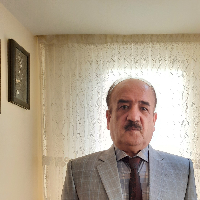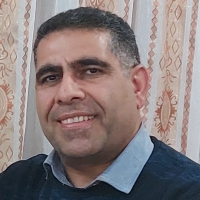Evaluating the risk of desertification using the spectral indices in the surrounding area of Lake Urmia
Desertification should be considered as the destruction of the fragile balance generating human, plant, and animal life in arid, semi-arid, and sub-humid arid areas. During the recent decade, Urmia catchment and the surrounding area of Lake Urmia have encountered imbalance by experiencing severe environmental fluctuations.Thus, due to the ecological and eco-systemic significance of this area, studying the occurrence of desertification seems essential. Thus, the present study including:1. the evaluation of the occurrence of desertification in the surrounding area of Lake Urmia using the spectral indices of vegetation, Albedo, tasseled cap, 2) Identifying a base pixel relationship between different biophysical indices (normalized vegetation difference, greenery rate, humidity rate, surface Albedo, brightness degree) and detection are among the best study pairs for evaluating the status of desertification due to the highest negative correlation among them.The studied area The studied is part of Urmia catchment located on northwestern Iran with geographical coordinates of 44 degrees and 0 minute to 47 degrees and 0-minute east longitude and also 37 degrees and 0 minute to 38 degrees and 20 minutes’ north latitude and has an area of 14395 square kilometers.
In the first step, Satellite images of Sentinel-2 (Level-1C) were downloaded from Copernicus Open Access Hub (https://scihub.copernicus.eu). The images were acquired on July 2018. The cloud- free images were selected on July because it is the period when natural and annual vegetation is minimal and crops are harvested. Desertification during this period is best assessed to avoid confusion with seasonal vegetation. In the second step the images were pre-processed and processed using QGIS software. Then, ArcGIS 10.3, SAGA-GIS, and SPSS (22) software were used for the statistical regression analysis between vegetation and Albedo (the first pair of spectral index), greenery and brightness coefficient (the second pair of spectral index), as well as humidity rate and brightness coefficient (the third pair of spectral index) were used to identify the pair of spectral indices with higher negative correlation.
Based on the results, the high rate of NDVI index and greenery rate are related to the points like the Alluvial fans located at the foot of Misudagh hillside.However, the low rate of the above-mentioned indices is related to the areas like aquatic zones (Lake Urmia). The Albedo rate in the studied area is between -0.01 to 0.9.The low values of Albedo index are related to the areas full of vegetation and aquatic bodies. The high values of Albedo and brightness rate are related to bright soils.The high rates of humidity are related to aquatic bodies, the areas with vegetation, and the humid lands around Lake Urmia while its low values are related to the soils with bright texture, the land without vegetation, and the lands and salt marsh without humidity resulted from the retrogression of Lake Urmia and poor soils without organic materials.In order to evaluate the regression relationship between the spectral indices, the SAGA-GIS was used. The analysis showed a strong negative correlation between the spectral index pair of humidity rate and brightness coefficient (r=0.37).After the spectral index pair of brightness coefficient-humidity rate, the spectral index pair of normalized difference Vegetation-Albedo is equal to r=0=1.14. The negative correlation is between the spectral index rate of brightness coefficient- greenery rate (r=4.9) allocating higher rate to itself than the previous spectral index pair.Thus, first the spectral index pair of brightness coefficient and humidity rate as well as normalized difference vegetation and Albedo was normalized.
After normalizing the two above-mentioned index pairs, the correlation coefficient for normalized vegetation -Albedo is equal to -0.34 and for humidity rate-brightness coefficient is equal to -0.31. Due to the close correlation obtained for the above-mentioned indices, the map for desertification risk was prepared based on the two above-mentioned pairs and then verified using the Confusion Matrix using Ground truth ROI. Kappa coefficient obtained for the map is equal to 0.89 and the obtained accuracy rate is equal to 90.1. The achieved desertification map was classified in five categories of without risk, poor, average, relatively severe, and severe. From the total 14350.81 square kilometers of the studied area, 557.391 square kilometers (3.9%) is at the severe risk of desertification, 2015.330 square kilometers (14.04$) is at the relatively severe risk, 4007.073 square kilometers (27.92%) is at the average risk, 3660.534 square kilometers (25.50%) is at the poor risk and 4110.473 square kilometers (28.64%) is at the class of no risk for desertification .Based on the above-mentioned issues, any effort for exploiting the lands located on the studied area should be made with full cation and based on sufficient knowledge on the conditions of these lands.
- حق عضویت دریافتی صرف حمایت از نشریات عضو و نگهداری، تکمیل و توسعه مگیران میشود.
- پرداخت حق اشتراک و دانلود مقالات اجازه بازنشر آن در سایر رسانههای چاپی و دیجیتال را به کاربر نمیدهد.




